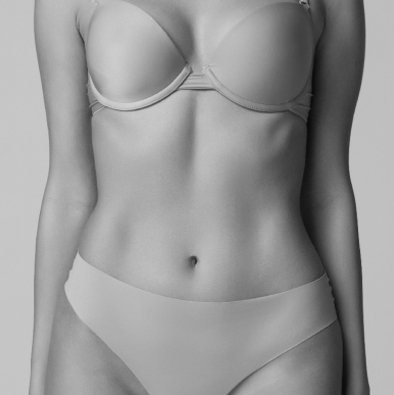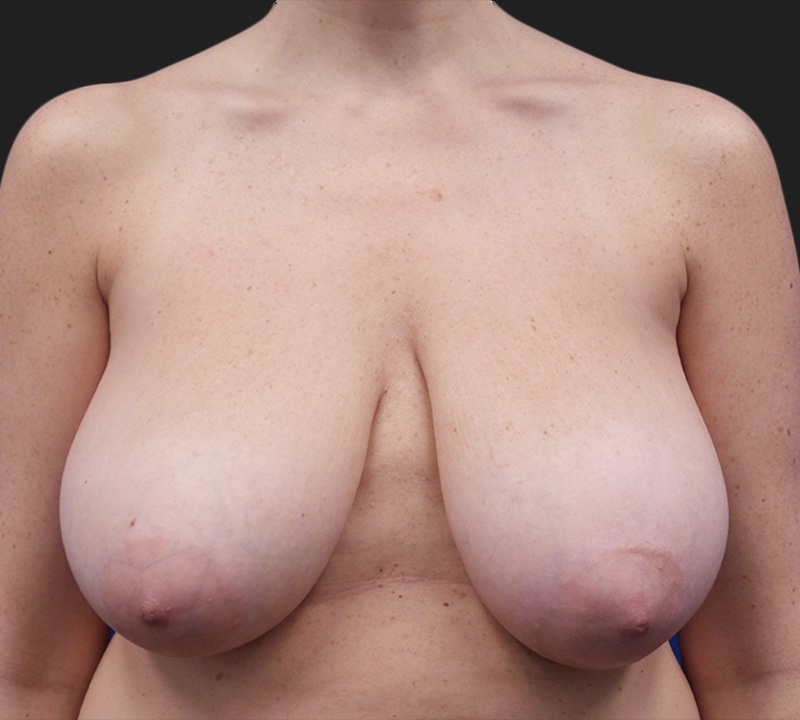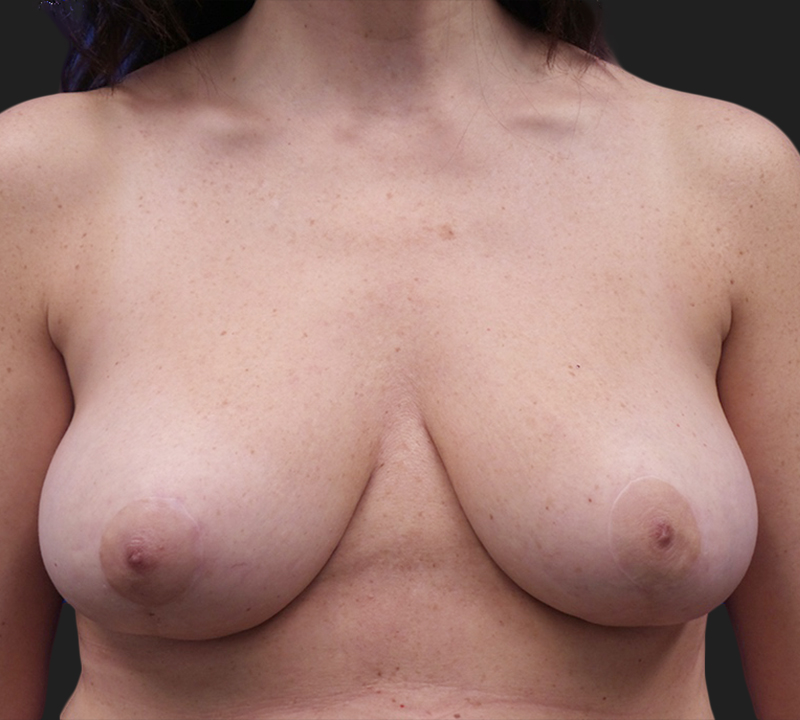Top Rated Breast Reduction in New York
Breast Reduction, also known as reduction mammoplasty, is a procedure in which fat, glandular tissue, and skin are removed from the breasts, making them smaller, lighter, and firmer. The breast tissue is also reshaped, and the nipple-areola complex is reduced if desired. read more

Is Breast Reduction Right For You?
A breast reduction procedure is suitable for individuals with disproportionately large breasts causing physical discomfort, pain, or hindrance in daily activities, and it aims to improve comfort and body proportions.
The goal is to give you smaller, better-shaped breasts that are in proportion with the rest of your body. If you have very large, pendulous breasts, you may experience a variety of medical problems caused by their excessive weight and size, such as:
Back and neck pain.
Breast pain or heaviness.
Changes in posture.
Shoulder “grooving” secondary to your bra straps.
Skin rashes on the under-surface of your breasts.
Interference with exercise and other activities.
Self-consciousness.
Difficulty finding clothing that fits properly.
Deciding to undergo a breast reduction procedure is a deeply personal and life-changing choice. While many individuals opt for this surgery to alleviate physical and emotional discomfort, it's essential to carefully consider if it's the right choice for you. Here are some key factors to help you determine if a breast reduction procedure is suitable:
Physical discomfort: If you suffer from chronic back, neck, or shoulder pain due to the weight of your breasts, or if you have skin irritation and rashes underneath your breasts, a breast reduction can provide significant relief.
Emotional well-being: Large breasts can affect self-esteem and body image. If you feel self-conscious, uncomfortable, or anxious about your breast size, a reduction can boost your confidence and emotional well-being.
Difficulty finding clothing: If shopping for clothing is a constant struggle due to the disproportionate size of your breasts, a breast reduction can make it easier to find well-fitting and stylish clothes.
Limitations on physical activity: If your breast size restricts your ability to engage in physical activities, such as exercise or sports, a breast reduction can help you lead a more active and fulfilling lifestyle.
Unrealistic expectations: It's crucial to have realistic expectations about the outcome of the surgery. Consult with a board-certified plastic surgeon to discuss your goals and ensure they align with what is achievable.
Physical health: Be in good overall health and avoid smoking, as these factors can affect the success of the surgery and the healing process.
Ultimately, the decision to have a breast reduction should be made after careful consideration, consultation with a qualified plastic surgeon, and weighing the physical and emotional benefits against potential risks. If the procedure can enhance your quality of life and well-being, it may be the right choice for you.
The scars from a breast reduction may be a welcome alternative to the physical and emotional pain of having very large breasts. Over many years, the skeletal changes caused by heavy breasts can lead to restrictions in flexibility and mobility. The changes brought about by breast reduction are among the most helpful and dramatic in the entire field of plastic and reconstructive surgery.
Dr. Kevin Tehrani is an expert breast surgeon who has performed hundreds of successful breast reduction surgeries.
read more
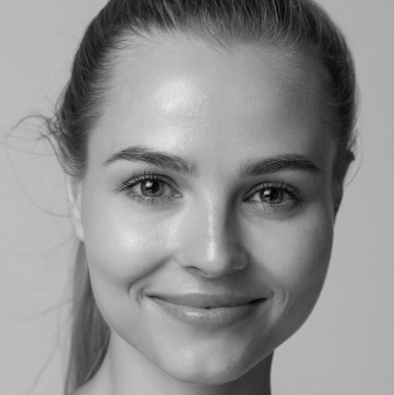
Who Is A Candidate for Breast Reduction?
Candidates include women who are troubled by very large, sagging breasts that restrict their activities and cause them physical discomfort. A breast reduction can be performed for cosmetic improvement, as well as symptomatic relief.
The ideal candidate for a breast reduction procedure is someone experiencing physical discomfort, pain, or limitations due to overly large breasts. They seek relief from these issues and desire a more proportionate and balanced body contour.
In younger patients, breast reduction surgery is performed after a young woman’s breasts are fully developed, usually no sooner than age 17 or 18. Rarely, the surgery may be performed at an earlier age if the patient is suffering emotionally, as well as physically, from the large size of her developing breasts. In adulthood, the surgery can be performed at any age.
read more

This procedure is usually performed with the patient under general anesthesia.
Incisions vary depending on the technique used. Scars are inevitable, but they fade and soften over the course of the year following surgery.
Here’s a detailed description of the breast reduction procedure:
- Consultation: The process begins with an initial consultation between the patient and board-certified plastic surgeon, Dr. Kevin Tehrani. During this consultation, Dr. Tehrani will evaluate the patient's overall health, medical history, breast size, skin elasticity, and other factors to determine their candidacy for the procedure. The patient's expectations and desired outcomes will also be discussed.
- Pre-operative Preparation: Before the procedure, the patient will undergo various pre-operative preparations, including medical assessments, blood tests, and potentially a mammogram to assess the health of the breast tissue. Dr. Tehrani will also provide instructions for preparing for the surgery, such as avoiding smoking and certain medications that could increase the risk of complications.
- Anesthesia: On the day of the surgery, the patient will be placed under general anesthesia to ensure their comfort and safety throughout the procedure.
- Incision Placement: Dr. Tehrani will make incisions on the breasts, strategically placing them to minimize visible scarring.
- Tissue Removal and Reshaping: Once the incisions are made, Dr. Tehrani will remove excess breast tissue, fat, and skin. The remaining breast tissue is then reshaped to achieve a more proportionate and aesthetically pleasing size and contour. The areola and nipple may also be repositioned to a higher position on the breast mound.
- Closure: After the tissue removal and reshaping are complete, the incisions are carefully closed with sutures. In some cases, absorbable sutures may be used, eliminating the need for suture removal later.
- Dressings and Support: Dr. Tehrani will apply dressings and possibly place a surgical bra or compression garment to support the breasts as they heal. These garments help reduce swelling and provide support during the initial healing period.
read more
What Is The Breast Reduction Procedure
Types of Breast Augmentation Procedures
Vertical (Lollipop) vs Wise Pattern (Anchor) Breast Reduction
Several common incision techniques used in breast reduction include:
Vertical or Lollipop Pattern: In some cases, the vertical reduction or “lollipop” technique might be possible. It’s so-called because the scar resembles the shape of a lollipop.
With one less incision, the lollipop pattern is less invasive and may shorten your recovery period. Dr. Tehrani will advise if you’re a good candidate for this type of breast reduction.
Wise Pattern or Anchor: The wise pattern or anchor technique is the traditional incision pattern used in breast reductions. This technique involves creating an anchor-shaped incision around the areola, vertically down to the breast crease, and then horizontally along the crease. This approach is suitable for patients with significant breast size reduction needs, and it helps to maintain blood supply to the nipple-areolar complex – an important consideration in a successful breast reduction.
Donut or Periareolar Pattern: This technique involves making a circular incision around the areola. It's suitable for patients requiring minimal reduction and primarily addresses sagging.
read more
Ultrasonic Liposuction Breast Reduction
If your breasts do not need to be reshaped and if the reduction you want is minimal, you might be a candidate for a less invasive ultrasonic liposuction breast reduction.
When you think of liposuction, you may not immediately think of breast reduction, though they are related. Liposuction is a surgical procedure to remove excess fat deposits from specific body areas, such as the abdomen, thighs, hips, arms, or even breasts. It’s a procedure used to improve the body’s contour by removing stubborn fat deposits that have failed to respond to diet and exercise. It involves using a specialized suction technique to break down and extract fat cells, contouring the body's shape. It may sound simple, but liposuction requires considerable training and technical skill on the surgeon's part, as well as an artistic sensibility. Liposuction is not a substitute for weight loss but aims to enhance body proportions.
"Liposculpture," another term for liposuction, reflects the procedure's dual purpose of removing excess fat while reshaping and sculpting the body's contours. By combining the removal of unwanted fat deposits with the aesthetic goal of achieving a more refined appearance, the term captures the transformative and artistic nature of the process.
Since the tissue is not excised, recovery is faster after this technique. Ultrasonic liposuction will not create satisfactory results for all patients, however. Dr. Tehrani will let you know during your consultation and examination if you are a good candidate for this technique.
Here’s a detailed description of the Ultrasonic Liposuction Breast Reduction Procedure:
Ultrasonic liposuction breast reduction is a surgical technique designed to reduce breast size using ultrasonic energy and liposuction methods. This procedure is primarily intended for women who desire smaller breasts without undergoing a traditional surgical breast reduction that involves more extensive incisions and tissue removal.
read more
Ultrasonic Liposuction Breast Reduction Procedure
Procedure Steps:
- Anesthesia: The procedure is typically performed under local anesthesia with sedation or general anesthesia. The choice of anesthesia depends on Dr. Tehrani’s recommendation and the patient's preferences.
- Marking and Planning: Dr. Tehrani will mark the areas of the breasts to be treated with liposuction. These areas are usually around the sides of the breasts, the upper chest, and possibly the lower part of the breasts. The markings help guide Dr. Tehrani during the procedure to ensure symmetry and accurate fat removal.
- Ultrasonic Energy Application: Once the patient is anesthetized and the areas are marked, Dr. Tehrani creates small incisions, usually around half an inch in length. Through these incisions, a thin cannula (a tube-like instrument) is inserted into the breast tissue. The cannula emits ultrasonic energy waves, which are used to liquefy and break down the fat cells within the targeted areas.
- Liposuction: After the fat cells are disrupted by ultrasonic energy, a specialized suction device (liposuction machine) is used to remove the liquefied fat from the breasts. This process involves gentle suction to carefully extract the fat cells without causing damage to surrounding tissues, blood vessels, and nerves.
- Sculpting and Contouring: Dr. Tehrani employs a meticulous approach to sculpt and contour the breast tissue as fat is removed. This step is crucial for achieving a natural and aesthetically pleasing breast shape.
- Closure: Once the desired amount of fat has been removed and the desired contour is achieved, Dr. Tehrani closes the incisions with sutures or adhesive skin closure strips. Dressings or bandages may be applied over the incisions to protect them during the initial healing phase.
read more
Ultrasonic Liposuction Breast Reduction Recovery and Results
Postoperative Recovery:
After the procedure, patients may experience mild discomfort, bruising, and swelling in the treated areas. A compression garment is usually recommended to help control swelling and support the healing process.
Results:
The results of ultrasonic liposuction breast reduction become more noticeable as swelling subsides over several weeks. The breasts will appear smaller, more proportionate, and better contoured. The final results are typically achieved within a few months as the body fully heals and any residual swelling resolves.
Considerations:
- Patient selection is crucial; not all patients are suitable candidates for this technique. However. Dr. Tehrani will let you know during your consultation and examination if you are a good candidate for this technique.
- The procedure is best suited for patients with a certain degree of skin elasticity, as excessively loose skin may not retract adequately after fat removal.
- Realistic expectations are essential; while the breasts will be smaller, complete elimination of sagging may not be achieved without a traditional breast lift.
Potential risks and complications, such as infection, scarring, asymmetry, or changes in nipple sensation, should be discussed with Dr. Tehrani before the procedure.
read more
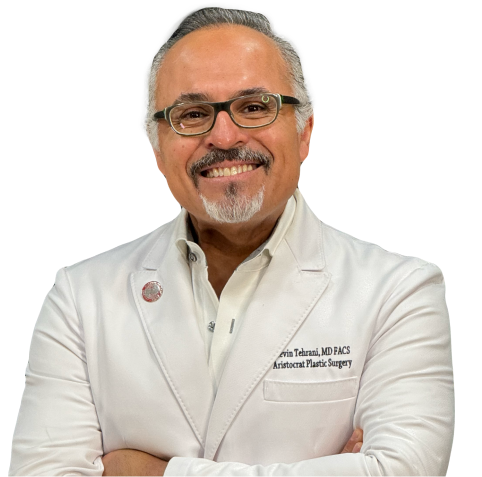
Meet Dr. Kevin Tehrani, MD FACS
Breast Reduction Initial Recovery
Recovering from a breast reduction is an essential phase of the overall procedure. While individual experiences can vary, here's a detailed description of what the recovery process generally entails:
Immediate Postoperative Period (First 24-48 Hours):
- Hospital Stay: Breast reduction surgery is typically performed as an outpatient procedure, which means you'll likely return home on the same day. However, in some cases or if there are complications, an overnight hospital stay might be required.
- Pain Management: You can expect some discomfort and pain in the first few days. Dr. Tehrani will prescribe pain medication to help manage this. Over-the-counter pain relievers may also be recommended, but it's essential to follow Dr. Tehrani’s instructions.
- Bandages and Dressings: Your surgical sites will be covered with dressings and possibly a surgical bra. These help support the breasts and protect the incisions.
- Drains: In some cases, surgical drains might be placed to remove excess fluid that accumulates during the initial stages of healing. You'll receive instructions on how to care for and empty these drains if they are used.
First Week:
- Rest and Limited Movement: Rest is crucial during this phase. You'll need to limit strenuous activities, lifting, and excessive arm movement to avoid straining the surgical areas.
- Swelling and Bruising: Swelling and bruising are common after surgery. Keeping your upper body elevated, even while sleeping, can help minimize swelling.
- Stitches Removal: If non-dissolvable stitches are used, you'll likely have a follow-up appointment within the first week to remove them. Dissolvable stitches will naturally dissolve over time.
read more
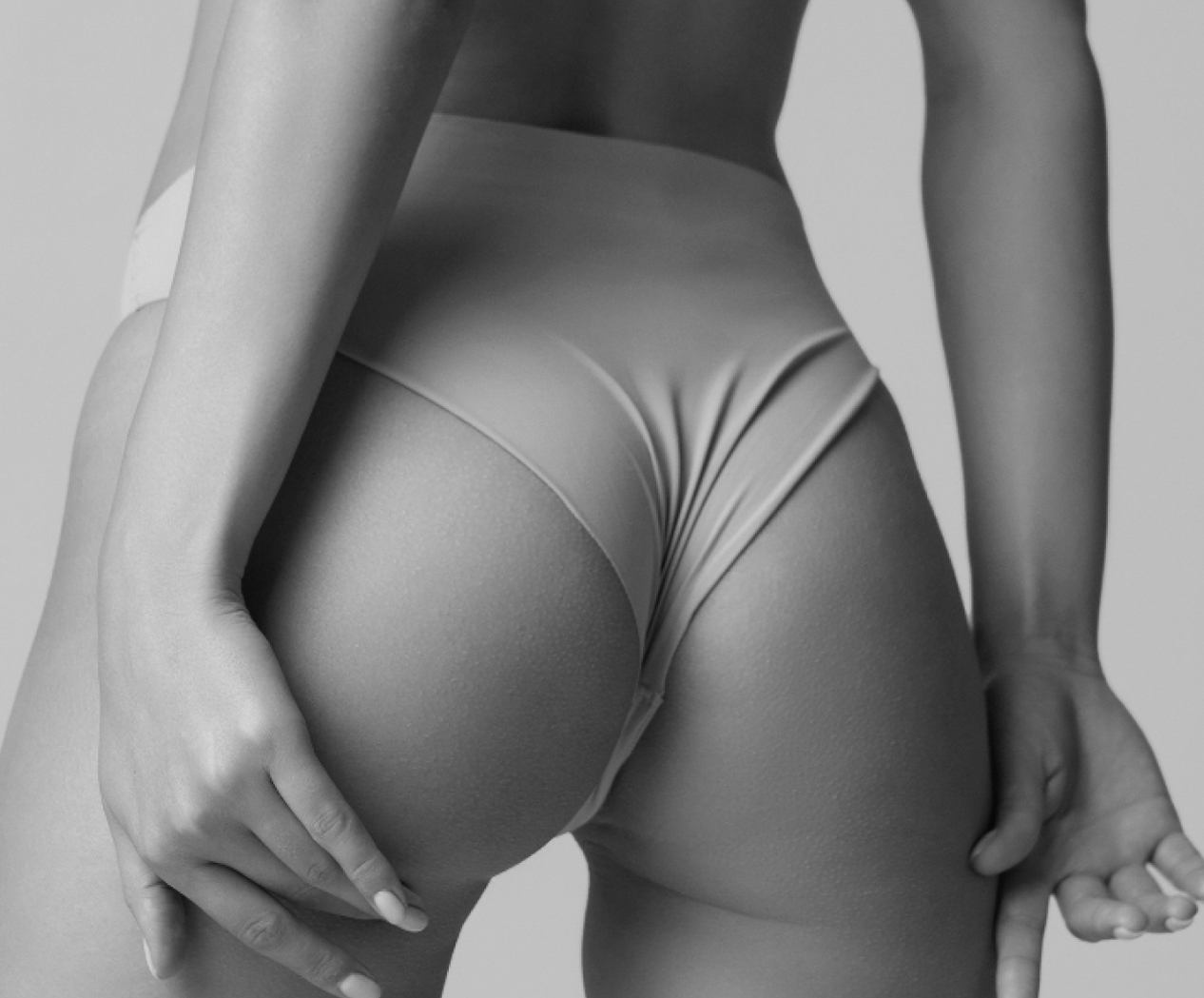
Breast Reduction Long Term Recovery
First Few Weeks:
- Surgical Bra: You'll need to wear a surgical or support bra for several weeks post-surgery. This helps provide proper support to the healing breasts and minimizes movement. We may fit you with a compression bra for a few weeks in order to speed healing and prevent swelling.
- Returning to Normal Activities: Most patients can return to light activities like walking within the first week. However, strenuous exercise, heavy lifting, and rigorous physical activities should be avoided for about 4–6 weeks. You should be able to return to work within 1–2 weeks and resume exercise in about a month.
First Month:
- Swelling and Bruising Improvement: Swelling and bruising will gradually start to subside, and you'll begin to see the initial results of your breast reduction.
- Scarring: While incision lines will start to heal, they will still be visible and may appear pink or red. Over time, they will fade, but the complete healing process might take several months to a year.
- Scar Care: Dr. Tehrani will provide guidance on scar care, which may involve using topical treatments or silicone sheets to help minimize scarring.
Longer-Term Recovery (2-6 Months and Beyond):
- Physical Activities: Around the 6-week mark, you'll likely be able to gradually resume more vigorous activities. However, it's essential to listen to your body and avoid overexertion.
- Final Results: While initial improvements will be noticeable within the first month, your breasts will continue to settle and heal over the next several months. The final results of your breast reduction can take up to a year to fully manifest.
- Scar Maturation: Scars will continue to fade and mature over time. They may still be slightly visible, but they should become less prominent as the healing process progresses.
Follow-Up Appointments: Dr. Tehrani will schedule follow-up appointments to monitor your healing progress and address any concerns you might have.
It's essential to follow Dr. Tehrani’s post-operative instructions diligently to ensure a smooth recovery and achieve the best possible outcome from your breast reduction surgery. Keep in mind that recovery experiences can vary, and it's normal to have questions or concerns during this process. Always communicate openly with your Aristocrat surgical team to address any issues that may arise.
read more
Get in touch
To schedule a consultation, please fill out the form below or call us at our Manhattan or Great Neck office locations.
"*" indicates required fields
Frequently
Asked Questions
Who is an ideal candidate?
Patients whose large breasts cause neck/back pain or self-consciousness, and who seek a more proportional size.
Will insurance cover it?
If deemed medically necessary (e.g., chronic pain), insurance may cover some or all costs. Check with your provider.
What is recovery like?
Most return to routine tasks in about 1–2 weeks, though strenuous activities should wait 4–6 weeks.
Are there visible scars?
Incisions around the areola and down to the breast crease are common. Scars usually fade significantly over time.
Can it affect breastfeeding?
It may. Techniques strive to preserve milk ducts, but there’s some risk. Discuss future breastfeeding plans with Dr. Tehrani.


